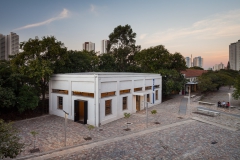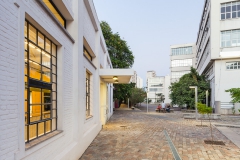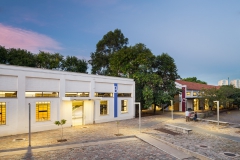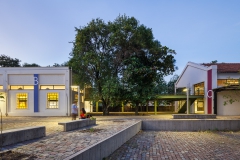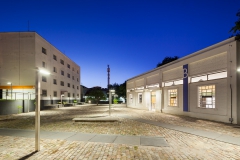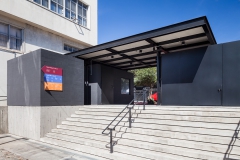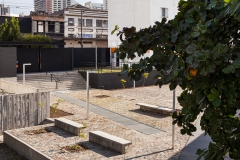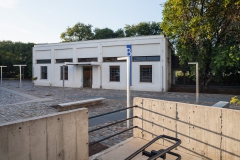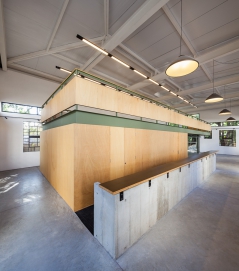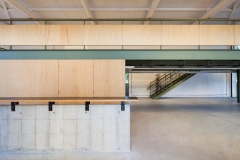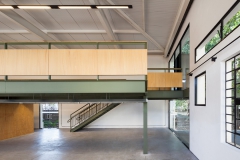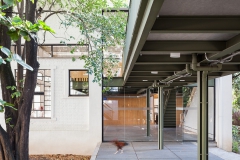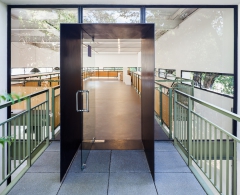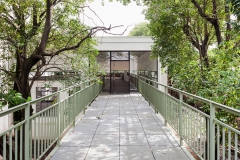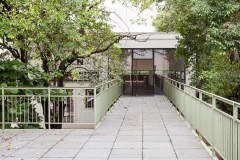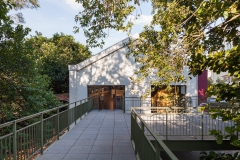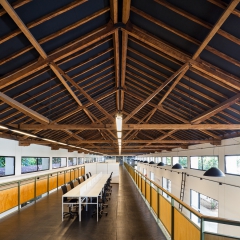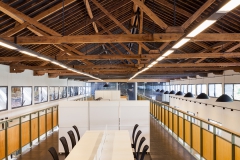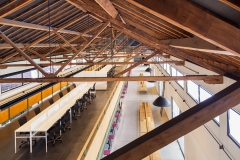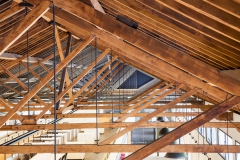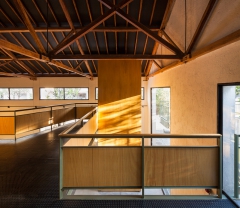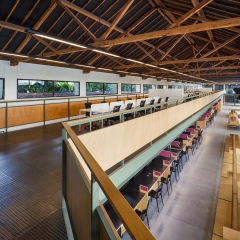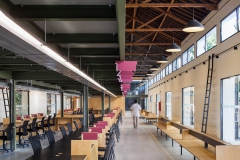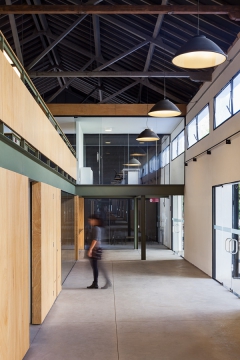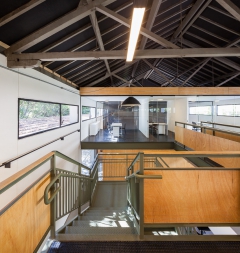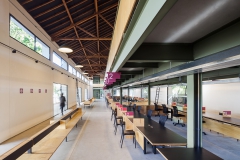“We want to adapt this little building so it works as a center of attendance for immigrants; it’s close to the street, almost ready; it’s just a pat”.
In these terms, begins the approach from the Secretaria de Estado da Justiça (State’s Justice Secretariat) with Escola da Cidade (School of the City). The “little building” is a typical example of residential architecture from the 60’s: three storeys, built on the street’s alignment, but with a series of unavoidable adaptations to accommodate it to the public use (circulations, accessibility, installations). And with an important detail: small for the project’s pretentions.
A few steps ahead, however, following within the same block (known as Barra Funda Complex and all State’s property), there were two particularly interesting buildings, built as a support to the railroad of the first decades of the XX century. The first – terrene construction, in bricks – harbored the responsible people for the tracks’ operation (with parts still deactivated on the place); the second, one hangar with more than 200m of length, develops itself along the line and with typical elevation of the cargo and storage department.
The challenge was redefined: convert the rail buildings into a space of meetings, reception and delivery of the first instruments of citizenship for all the immigrants welcomed in São Paulo. Beyond the good metaphor (the train, the station, the arrival), both of the buildings revealed immediately the best structure to adapt itself: continuous space, wide and with the possibility of enlargement with time within the same logics of intervention.
The project is organized as a welcoming place; it imposes the design of a reception square, franchised to the street by a staircase that permeates the gap. Besides harboring the access’s flow, this space makes a connection between the two buildings occupied by the attendance programs and defines the necessary separation from the other programs of the complex (the block’s core is taken by a parking lot that serves the public programs from the other buildings). The square develops itself until it gets to the garden (existent) that takes all the limit with the railroad, acquiring dimension of proper public space for the frequent parties, conventions and meeting for the organized immigrant’s entities and their webs of support.
The railroad operations’ building is converted into a space to support the square, harboring a café and the state’s program of Internet access and children’s recreation. All of the roofing was redone and all the system of access opening, ventilation and illumination were revised.
The linear hangar concentrates the attendance department – to be operated by the Federal Police, main agent for the processes of documentation and regularization of immigration. The longitudinal dimension of the railroad’s old storage is reaffirmed by the organization of the attendance places, followed along of the almost 70 occupied meters of the building. The original elements of the roofing (the peroba scissors with steal trusses, riveted steal corners for the side marquise) were restored and, roofless, summoned to participate in the spatiality on the new place.
The third element built is proposed as an articulation between the two existent blocks and as a solution for the segmentation of the uses: a mezzanine in steal occupies partially the unoccupied space of the two buildings and allows the areas of rear of the attendance services keep isolated from the public access areas (at the upper level) and that it organizes the spaces for attendance and support (at the bottom level)
Datasheet:
Architecture: ESCOLA DA CIDADE / B ARQUITETOS (Felipe Noto, Maira Rios)
(Paulo Emilio Ferreira, Denis Joelsons, Lara Ferreira, Adriana Matsufuji, Letícia Amado, Beatriz Hoyos, Murillo Lazzari).
Signaling: ESCOLA DA CIDADE (Coordination Hermann Tascht e Luis Felipe Abbud. Team: Ana Carolina Hidalgo Martini, Manuela Raitellii, Marina Brant, Rebeca Domiciano de Paula, Vitor Hugo Pissaia).
Structures: INNER ENGENHARIA
Electric and hydraulic installations: PHE ENGENHARIA DE PROJETOS
Climate control: HTY PROJETOS DE ENGENHARIA TÉRMICA
Environment and illumination comfort: K2 ARQUITETURA
Landscaping: SOMA ARQUITETOS
Construction: NIX Engenharia
Escola da Cidade/City School: Ciro Pirondi (Diretor), Anália Amorim (Presidente da Associação Escola da Cidade), Felipe Noto e Marta Moreira (Conselho Técnico)
